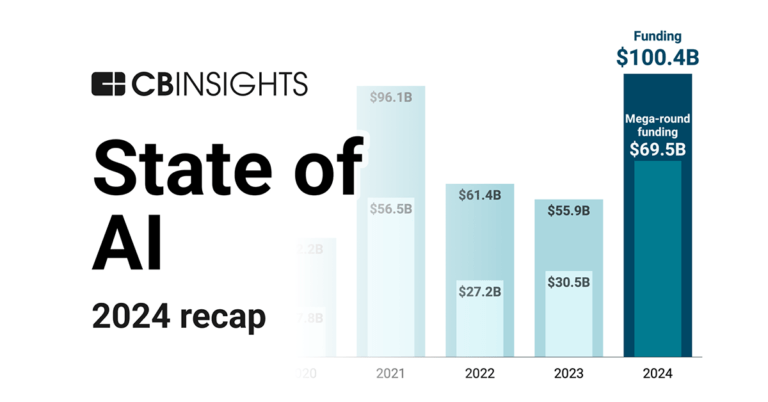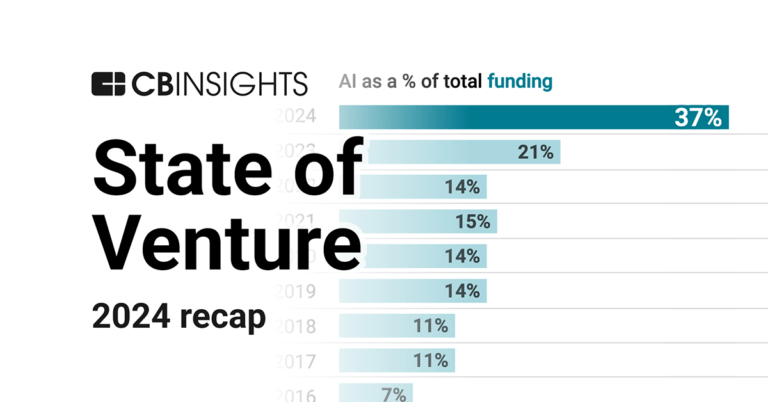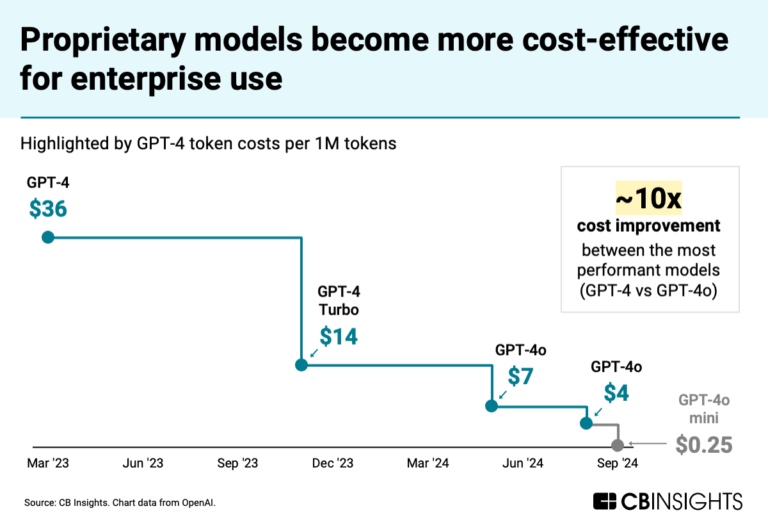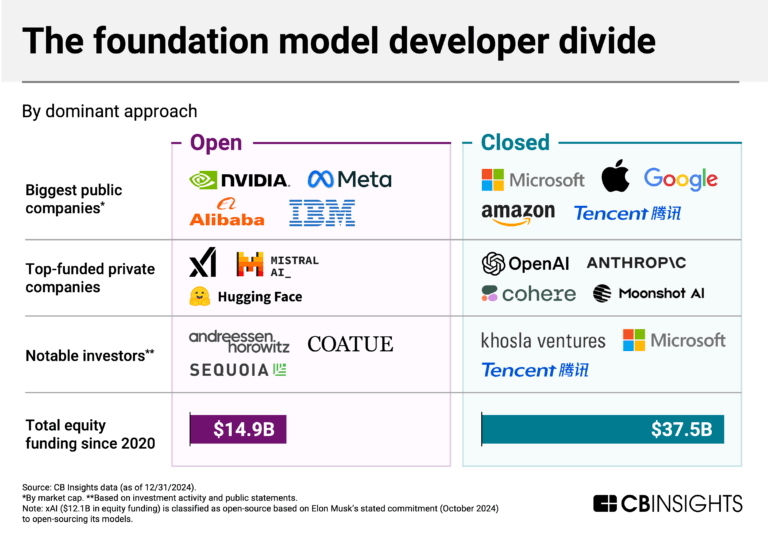
Anthropic
Founded Year
2021Stage
Unattributed VC - II | AliveTotal Raised
$12.454BValuation
$0000Last Raised
$2B | 1 mo agoRevenue
$0000Mosaic Score The Mosaic Score is an algorithm that measures the overall financial health and market potential of private companies.
+4 points in the past 30 days
About Anthropic
Anthropic operates a safety and research company focused on developing AI systems. The company's main offerings include Claude, an AI assistant for various tasks, and a suite of research initiatives aimed at AI safety and interpretability. Anthropic's research includes natural language processing, human feedback, reinforcement learning, and other areas. It was founded in 2021 and is based in San Francisco, California.
Loading...
ESPs containing Anthropic
The ESP matrix leverages data and analyst insight to identify and rank leading companies in a given technology landscape.
The personal AI assistants & copilots market consists of AI-powered agents and copilots that support routine tasks like web research, calendaring, email follow-up, and call summaries. Some tools also provide writing assistance and can help in drafting emails and memos. These platforms help to increase users' efficiency and productivity through time savings.
Anthropic named as Leader among 15 other companies, including Google, OpenAI, and Perplexity.
Anthropic's Products & Differentiators
Claude
Claude 3.5 Sonnet is our most intelligent AI model, excelling at code generation, advanced chatbots, knowledge Q&A, and computer use. Claude.ai is an AI assistant built by Anthropic to be fast, capable, and conversational. Claude for Work empowers every employee with AI as it offers employees a secure way to scale organizational knowledge and expertise, and improve efficiency with AI. Our API enables companies to build custom AI applications with Claude models, supported by the Anthropic Console’s developer tools. All of this is underpinned by Anthropic’s industry-leading approach to AI safety. Our Constitutional AI approach ensures Claude is helpful, harmless, and honest with “human-like” character. We publish research on alignment, interpretability, and societal impacts to advance the field of AI safety.
Loading...
Research containing Anthropic
Get data-driven expert analysis from the CB Insights Intelligence Unit.
CB Insights Intelligence Analysts have mentioned Anthropic in 34 CB Insights research briefs, most recently on Feb 28, 2025.

Feb 28, 2025
What’s next for AI agents? 4 trends to watch in 2025
Jan 30, 2025 report
State of AI Report: 6 trends shaping the landscape in 2025
Jan 7, 2025 report
State of Venture 2024 ReportExpert Collections containing Anthropic
Expert Collections are analyst-curated lists that highlight the companies you need to know in the most important technology spaces.
Anthropic is included in 6 Expert Collections, including Unicorns- Billion Dollar Startups.
Unicorns- Billion Dollar Startups
1,261 items
AI 100
100 items
Generative AI 50
50 items
CB Insights' list of the 50 most promising private generative AI companies across the globe.
Generative AI
1,298 items
Companies working on generative AI applications and infrastructure.
AI 100 (2024)
100 items
Artificial Intelligence
7,222 items
Latest Anthropic News
Mar 3, 2025
Grossman/Dall-E Join our daily and weekly newsletters for the latest updates and exclusive content on industry-leading AI coverage. Learn More The latest AI large language model (LLM) releases, such as Claude 3.7 from Anthropic and Grok 3 from xAI, are often performing at PhD levels — at least according to certain benchmarks. This accomplishment marks the next step toward what former Google CEO Eric Schmidt envisions : A world where everyone has access to “a great polymath,” an AI capable of drawing on vast bodies of knowledge to solve complex problems across disciplines. Wharton Business School Professor Ethan Mollick noted on his One Useful Thing blog that these latest models were trained using significantly more computing power than GPT-4 at its launch two years ago, with Grok 3 trained on up to 10 times as much compute. He added that this would make Grok 3 the first “gen 3” AI model, emphasizing that “this new generation of AIs is smarter, and the jump in capabilities is striking.” For example, Claude 3.7 shows emergent capabilities, such as anticipating user needs and the ability to consider novel angles in problem-solving. According to Anthropic, it is the first hybrid reasoning model, combining a traditional LLM for fast responses with advanced reasoning capabilities for solving complex problems. Mollick attributed these advances to two converging trends: The rapid expansion of compute power for training LLMs, and AI’s increasing ability to tackle complex problem-solving (often described as reasoning or thinking). He concluded that these two trends are “supercharging AI abilities.” What can we do with this supercharged AI? In a significant step, OpenAI launched its “deep research” AI agent at the beginning of February. In his review on Platformer , Casey Newton commented that deep research appeared “impressively competent.” Newton noted that deep research and similar tools could significantly accelerate research, analysis and other forms of knowledge work, though their reliability in complex domains is still an open question. Based on a variant of the still unreleased o3 reasoning model, deep research can engage in extended reasoning over long durations. It does this using chain-of-thought (COT) reasoning, breaking down complex tasks into multiple logical steps, just as a human researcher might refine their approach. It can also search the web, enabling it to access more up-to-date information than what is in the model’s training data. Timothy Lee wrote in Understanding AI about several tests experts did of deep research, noting that “its performance demonstrates the impressive capabilities of the underlying o3 model.” One test asked for directions on how to build a hydrogen electrolysis plant. Commenting on the quality of the output, a mechanical engineer “estimated that it would take an experienced professional a week to create something as good as the 4,000-word report OpenAI generated in four minutes.” But wait, there’s more… Google DeepMind also recently released “AI co-scientist,” a multi-agent AI system built on its Gemini 2.0 LLM. It is designed to help scientists create novel hypotheses and research plans. Already, Imperial College London has proved the value of this tool. According to Professor José R. Penadés, his team spent years unraveling why certain superbugs resist antibiotics. AI replicated their findings in just 48 hours. While the AI dramatically accelerated hypothesis generation, human scientists were still needed to confirm the findings. Nevertheless, Penadés said the new AI application “has the potential to supercharge science.” What would it mean to supercharge science? Last October, Anthropic CEO Dario Amodei wrote in his “ Machines of Loving Grace ” blog that he expected “powerful AI” — his term for what most call artificial general intelligence (AGI) — would lead to “the next 50 to 100 years of biological [research] progress in 5 to 10 years.” Four months ago, the idea of compressing up to a century of scientific progress into a single decade seemed extremely optimistic. With the recent advances in AI models now including Anthropic Claude 3.7, OpenAI deep research and Google AI co-scientist, what Amodei referred to as a near-term “radical transformation” is starting to look much more plausible. However, while AI may fast-track scientific discovery, biology, at least, is still bound by real-world constraints — experimental validation, regulatory approval and clinical trials. The question is no longer whether AI will transform science (as it certainly will), but rather how quickly its full impact will be realized. In a February 9 blog post, OpenAI CEO Sam Altman claimed that “systems that start to point to AGI are coming into view.” He described AGI as “a system that can tackle increasingly complex problems, at human level, in many fields.” Altman believes achieving this milestone could unlock a near-utopian future in which the “economic growth in front of us looks astonishing, and we can now imagine a world where we cure all diseases, have much more time to enjoy with our families and can fully realize our creative potential.” A dose of humility These advances of AI are hugely significant and portend a much different future in a brief period of time. Yet, AI’s meteoric rise has not been without stumbles. Consider the recent downfall of the Humane AI Pin — a device hyped as a smartphone replacement after a buzzworthy TED Talk . Barely a year later, the company collapsed, and its remnants were sold off for a fraction of their once-lofty valuation. Real-world AI applications often face significant obstacles for many reasons, from lack of relevant expertise to infrastructure limitations. This has certainly been the experience of Sensei Ag, a startup backed by one of the world’s wealthiest investors. The company set out to apply AI to agriculture by breeding improved crop varieties and using robots for harvesting but has met major hurdles. According to the Wall Street Journal, the startup has faced many setbacks, from technical challenges to unexpected logistical difficulties, highlighting the gap between AI’s potential and its practical implementation. What comes next? As we look to the near future, science is on the cusp of a new golden age of discovery, with AI becoming an increasingly capable partner in research. Deep-learning algorithms working in tandem with human curiosity could unravel complex problems at record speed as AI systems sift vast troves of data, spot patterns invisible to humans and suggest cross-disciplinary hypotheses. Already, scientists are using AI to compress research timelines — predicting protein structures, scanning literature and reducing years of work to months or even days — unlocking opportunities across fields from climate science to medicine. Yet, as the potential for radical transformation becomes clearer, so too do the looming risks of disruption and instability. Altman himself acknowledged in his blog that “the balance of power between capital and labor could easily get messed up,” a subtle but significant warning that AI’s economic impact could be destabilizing. This concern is already materializing, as demonstrated in Hong Kong, as the city recently cut 10,000 civil service jobs while simultaneously ramping up AI investments. If such trends continue and become more expansive, we could see widespread workforce upheaval, heightening social unrest and placing intense pressure on institutions and governments worldwide. Adapting to an AI-powered world AI’s growing capabilities in scientific discovery, reasoning and decision-making mark a profound shift that presents both extraordinary promise and formidable challenges. While the path forward may be marked by economic disruptions and institutional strains, history has shown that societies can adapt to technological revolutions, albeit not always easily or without consequence. To navigate this transformation successfully, societies must invest in governance, education and workforce adaptation to ensure that AI’s benefits are equitably distributed. Even as AI regulation faces political resistance, scientists, policymakers and business leaders must collaborate to build ethical frameworks, enforce transparency standards and craft policies that mitigate risks while amplifying AI’s transformative impact. If we rise to this challenge with foresight and responsibility, people and AI can tackle the world’s greatest challenges, ushering in a new age with breakthroughs that once seemed impossible. Daily insights on business use cases with VB Daily If you want to impress your boss, VB Daily has you covered. We give you the inside scoop on what companies are doing with generative AI, from regulatory shifts to practical deployments, so you can share insights for maximum ROI. Subscribe Now
Anthropic Frequently Asked Questions (FAQ)
When was Anthropic founded?
Anthropic was founded in 2021.
Where is Anthropic's headquarters?
Anthropic's headquarters is located at 548 Market Street, San Francisco.
What is Anthropic's latest funding round?
Anthropic's latest funding round is Unattributed VC - II.
How much did Anthropic raise?
Anthropic raised a total of $12.454B.
Who are the investors of Anthropic?
Investors of Anthropic include Menlo Ventures, Bessemer Venture Partners, Lightspeed Venture Partners, Salesforce Ventures, Cisco Investments and 45 more.
Who are Anthropic's competitors?
Competitors of Anthropic include xAI, Sakana AI, OpenAI, Goodfire AI, Convergence and 7 more.
What products does Anthropic offer?
Anthropic's products include Claude.
Loading...
Compare Anthropic to Competitors

Cohere is an enterprise AI platform that develops artificial intelligence solutions. The company offers AI models for text generation, document analysis, and assistant development, which can be integrated into enterprise workflows. Cohere's solutions serve various sectors including financial services, healthcare, manufacturing, energy, and the public sector. It was founded in 2019 and is based in Toronto, Canada.

AI21 Labs operates as an artificial intelligence (AI) lab and product company. The company offers a range of AI-powered tools, including a writing companion tool to assist users in rephrasing their writing and an AI reader that summarizes long documents. It also provides language models for developers to create AI-powered applications. It was founded in 2017 and is based in Tel Aviv, Israel.

OpenAI is an artificial intelligence research and deployment company that focuses on ensuring that AI benefits all of humanity. The company's main offerings include developing AI technologies with a commitment to safety, alignment with human values, and broad societal benefits. OpenAI's products and services are designed to address global challenges and promote the equitable distribution of AI advantages. It was founded in 2015 and is based in San Francisco, California.

Hugging Face focuses on advancing artificial intelligence through collaboration in the technology sector. It provides a platform for machine learning professionals to build, share, and collaborate on models, datasets, and applications. The company offers solutions that cater to various modalities, including text, image, video, audio, and 3D, as well as enterprise-grade services for teams requiring advanced AI tooling with enhanced security and support. It was founded in 2016 and is based in Paris, France.

One AI specializes in generative artificial intelligence (AI) within the technology sector. The company offers services such as language analytics, customizable AI skills, and the processing of text, audio, and video data into structured, actionable insights. It primarily serves sectors such as customer service, e-commerce, media, healthcare, and government. It was founded in 2021 and is based in San Francisco, California.

Convergence specializes in the development of personal AI assistants within the technology sector. Their main product, Proxy, is an AI assistant that learns, adapts, and remembers user interactions to handle tasks autonomously. Proxy is designed to integrate with enterprise systems, offering a secure and scalable solution. It was founded in 2024 and is based in Altrincham, United Kingdom.
Loading...




